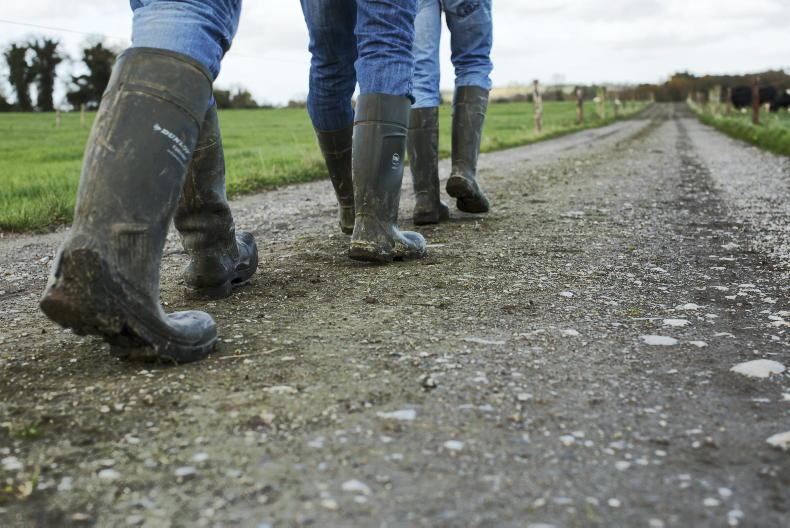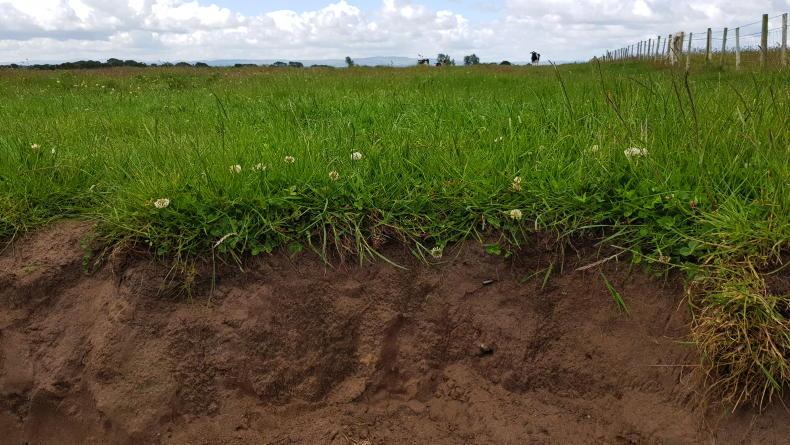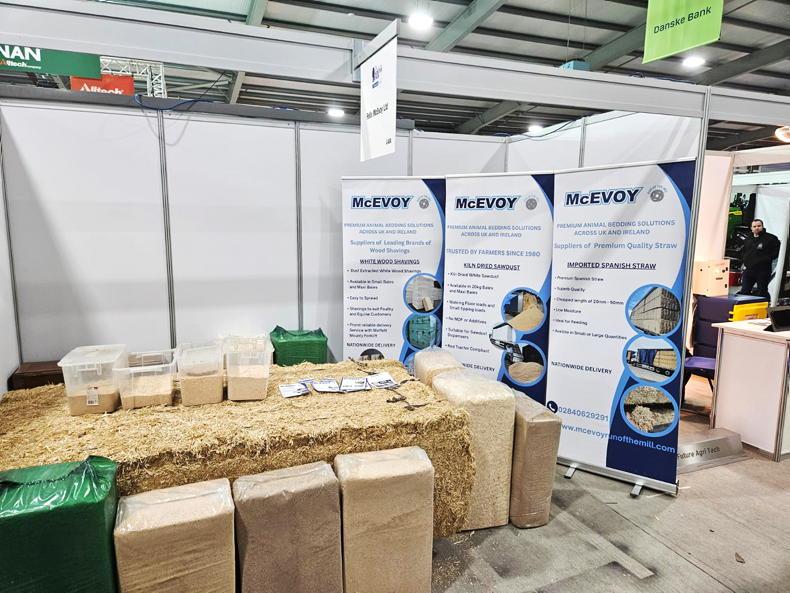Straw incorporation has become a hot topic. Tillage farmers currently await the details of a €10m scheme from the Department of Agriculture to encourage straw chopping and incorporation.
The initiative seems to be largely welcome, but clarity is needed before it gets full approval from the tillage community.
Some livestock farmers are wary of the proposed scheme, but the impact on straw availability and prices is likely to be minimal.
The weather in 2020 forced a drop in straw supply, up to 50% in some areas
It is also important for them to note that Irish grain production has very low carbon emissions (1.18t CO2 equivalent/ha) and that the addition of this carbon to tillage soils will most likely be offsetting emissions from other sectors in our country’s overall budget. This is critical because dairy (8.7t CO2 equivalent/ha) and beef (4.4t CO2 equivalent/ha) systems have much higher emissions.
The weather in 2020 forced a drop in straw supply, up to 50% in some areas, yet demand for the product is only picking up now as there was little appetite from livestock farmers for straw at harvest time. Tillage farmers need some sort of security and they cannot continue to gamble and store straw while the product could be benefiting their soils.
Payment must cover costs
At present there are only rumours as to how this new scheme might work. However, if it is to work and have wide appeal, the payment needs to be sensible and all types of cereal straw need to be included to give all tillage farmers the opportunity to participate. In reality, many on mixed farms will be keeping their own straw, while others will continue to bale for regular customers.
The scheme must also compensate for extra costs such as seeding rate increases, yield losses and the costs of chopping and incorporation
It will be the straw that may not be sold that will get chopped. To entice farmers to turn on the choppers, the payment must come near to what that straw would be worth in the market.
The scheme must also compensate for extra costs such as seeding rate increases, yield losses and the costs of chopping and incorporation.
Research trials give insight
Trials carried out on straw incorporation at UCD Lyons Research Farm from 2009 to 2011 showed that an increase in seeding rate was needed to minimise yield losses. It also found that yields took a hit in the early years of straw incorporation.
The three-year study was carried out on spring barley in a minimum tillage situation.
It examined plots which received straw at a rate of 8t/ha in either years one and two; year two; years one, two and three; and the final treatment was a control which did not receive any straw over the three-year period.
Across the three years, soil organic matter content did increase, but not significantly
In year three, straw was applied to the plots at the end of January and disced for the first time three weeks ahead of sowing, before being disced a second time a week before sowing at the end of March.
Farmers chopping straw should be aiming to incorporate it into the soil as soon as possible after harvest to increase biological activity.
Across the three years, soil organic matter content did increase, but not significantly. In reality, it could take a few decades to increase soil organic matter by 1-2% from straw alone, but straw incorporation has other benefits such as protecting soil from erosion and increasing microbial activity with the addition of organic carbon.
Reduced establishment and yield following straw incorporation
The first thing to note from these trials is that establishment rate and grain yield were reduced where straw was incorporated. At least 81% crop canopy cover was achieved across all straw incorporation treatments in all three years.
However, the study concluded that higher seeding rates should be used where straw is incorporated in order to improve establishment rates (under minimum tillage).
Increasing seeding rate can help to improve plant populations where large volumes of material cover the soil and where slugs become an issue, which can be more likely with straw incorporation. Seeding rate only resulted in an increase in grain yield in year three.
Yield loss
Yield loss was a concern and can be a problem where straw is not chopped every year.
Grain yield was lower across all three years where straw was incorporated, although not significantly lower in year three; perhaps a sign that carbon and nitrogen levels were starting to approach the right balance.
Carbon and nitrogen need to be at a ratio of 25:1 (C:N) in the soil or nitrogen can become locked up. This sounds another note of caution, particularly on crops like distilling barley where nitrogen rates are low.
Where straw was incorporated across all three years, the difference in yield from the no-straw plots was 1.82t/ha in year one, 0.5t/ha in year two and 0.1t/ha in year three.
It is also interesting to note that a yield bounce was achieved in the year following straw incorporation, as can be seen in Table 1.
In other words, where straw was incorporated one year and not the next, yield was higher in the second year and was also higher than plots where no straw was applied in any year.
Payment will have to compensate and incentivise
It is clear that any initiative will have to incentivise farmers to chop straw and therefore compensate them for any potential grain yield loss or extra costs incurred, as well as the loss of straw sales.
It should also be noted that while turning, baling and loading costs and their effects on soil compaction disappear, there is an additional cost for chopping straw added to the harvesting bill. This equates to approximately €6/ac.
Chopped straw should also be incorporated using shallow cultivation to enable degradation to begin.
Chopping headlands makes a lot of sense
It is unclear if growers will be allowed to chop certain areas of fields. For example, tillage farmers often chop the headlands of a field, but will this be allowed under the scheme or will it have to be chopped in a block?
From an environmental point of view, chopping headlands makes sense. Headlands are usually the most compacted area of the field. Less traffic, along with the addition of the straw to the soil could result in an increase in soil health and biological activity.
Headland straw is often the most troublesome to dry and so chopping that area can also result in fewer runs of the tractor as straw will not have to be turned.









SHARING OPTIONS